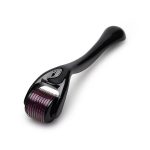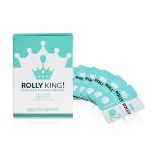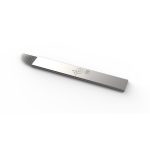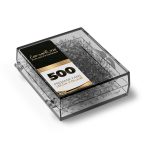First of all, what is rosacea?
Rosacea is a chronic inflammatory skin condition which most often affects the central part of the face. Contrarily to acne vulgaris, it does not embrace the formation of comedones (primary acne lesions) or scarring. Besides the skin, the eyes are the second most common impacted organ. It frequently arises in middle-aged adults.
What is the cause of rosacea?
The exact etiology of the rash is unknown until this day. Broadly speaking, the rosacea lesions are comprised of four components: papules (small, hardened elevations of the skin), pustules (skin lesions filled with pus, often having a reddened halo), erythema (skin reddening) and teleangiectasia (small broken blood vessels). Conseqently, rosacea has both its inflammatory and vascular constituents. In any event, it is aggravated by the sun rays, spicy, hot foods, alcohol, certain facial creams and oils as well as topical steroids. Furthermore, it has been linked with the colonisation of the stomach by the bacterium Helicobacter pylori.
How do rosacea lesions look like?
The condition usually has a gradual onset. Firstly, the patient notices symmetrical erythema (reddening) in the central part of the face. It is not anyhow elevated from the skin level, but easily discernable on the basis of colour. With time, teleangiectasia, or the vasular lesions, appear, alongside the formation of papules and pustules. In males, the disorder can lead to rhinophyma or the deformation of the nose. Simultaneously, ocular manifestations are not uncommon - blepharitis (inflammation of the eyelids) and conjunctivitis are quite frequent findings.
Pharmacological treatment of rosacea.
The mild form of rosacea with scarce pustules and erythema is treated locally, typically with topical metronidazole in 0.75% concentration or topical azelaic acid in 15% concentration, applied once or twice a day. They are both particularly effective in treating the pustules and papules, nonetheless diminishing the appearance of erythema may involve an additional laser therapy. If the topical options fail or the condition is too advanced, oral treatment becomes necessary. Primarily, oral antibiotics like tetracycline, doxycycline or minocycline are prescribed. The second line treatment includes erythromycin and clarithromycin. Similarly, systemic isotretinoin (a vitamin A derivative) is used as the last resort. As mentioned earlier, topical steroids are definitively contraindicated as they knowingly exacerbate the course of the disease.
How to care for the skin with rosacea?
In the following section we will discuss the best practices on how to care for the skin with rosacea condition. We will also advise on best products from our MCCM range that you can use to treat this problem.
Hydrate and moisturize
Proper hydration and moisturizing are both a must, especially if the skin is naturally more sensitive like the one with rosacea. Since heavy, oil-based facial creams are known to aggravate the condition, it is best to choose lighter, more hydrating formulas with just a touch of non-comedogenic nourishing oils - they are still needed to lock the water in and strengthen the skin ’s protective barrier. At the same time, the products should not contain any potentially irritating ingredients which make the skin more susceptible to the sun like retinol or vitamin C. MCCM Medical Cosmetics comes forward with two ideal moisturizers for those who struggle with rosacea:
Regenerator cream is a perfect option if you have rosacea and need that extra nourishing moisture boost. Containing Aloe Barbadensis extract, the moisturizer actively draws water into the skin as well as soothes discomfort and erythema. It is also notably anti-inflammatory, alongside calming Apricot Kernel Oil which replenishes the damaged skin barrier without being too heavy. Mimosa tenuiflora Leaf extract slows skin aging as well as contributes to the diminishing of the erythema and the spots.
Proteohydra offers immense hydration to the skin, as it teems with Sodium Hyaluronate. The ingredient is proven to bind tens of water molecules in the skin layers once at a time. Completely non-comedogenic Shea Butter provides additional hydration, soothes and heals, being naturally abundant in calming tocopherol, or vitamin E. Besides, Centella Asiatica and Collagen excellently improve the texture of the skin, preventing premature aging.
Everyone should wear sunscreen everyday, regardless of their skin type, let alone the patients suffering from rosacea whose condition worsens when exposed to the sun. MCCM Sun Cream SPF 50+ is an excellent option for this occasion. It offers the highest recommended protection, both against UVA and UVB, as well as simultaneously supports the health of the skin. Being rich in water-loving ingredients like Urea and Glycerin, the sunblock notably increases the hydration level of the skin without being heavy. At the same time, it contains Allantoin and Tocopherol of extraordinary soothing properties that are especially needed to prevent sun-related irritation.











































